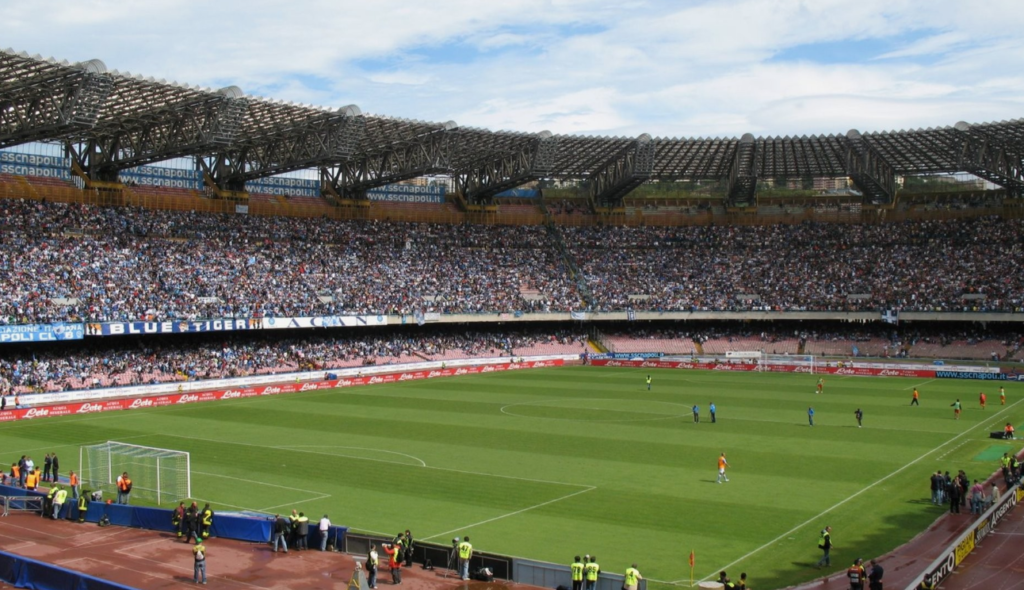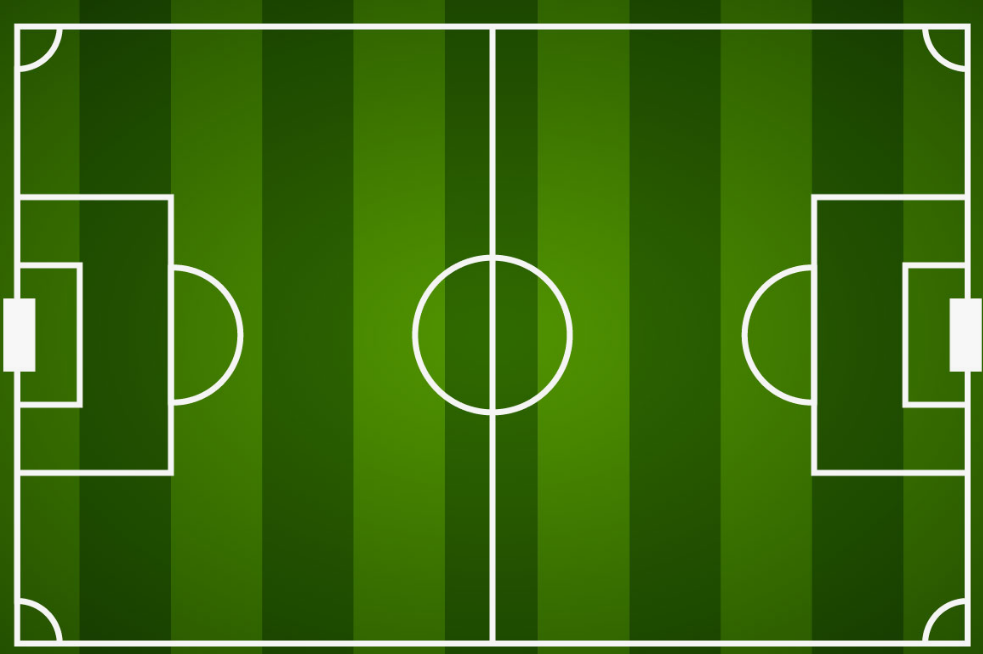A standard soccer field measures 100-130 yards in length and 50-100 yards in width. Soccer field dimensions in feet vary based on official regulations and can range from 3000 to 6500 square feet. The size of a soccer field is crucial for gameplay, ensuring fairness and strategic play for teams. Understanding the specific measurements of a soccer field is essential for players, coaches, and fans alike. From youth games to professional matches, the dimensions of a soccer field impact the dynamics and flow of the game.
Let’s explore the significance of soccer field dimensions in providing a competitive and enjoyable playing experience for all involved.
Soccer Field Dimensions in Feet

Standard Soccer Field Dimensions
In soccer, having standard field dimensions is crucial for fair play. The length and width of a soccer field are defined to ensure consistency across matches.
Length of The Field- Soccer Field Dimensions in Feet
The length of a standard soccer field is typically between 100 to 130 yards.
Width of The Field
The width of a standard soccer field is usually between 50 to 100 yards.
Variations In Soccer Field Dimensions
When it comes to soccer field dimensions, some variations exist based on different factors such as the location, purpose, and governing bodies. These variations can impact the size and layout of the soccer field, ultimately affecting the gameplay and strategies employed by teams. Understanding these variations is essential for players, coaches, and organizers to ensure compliance with regulations and optimal playing conditions.
International Variations
International soccer field dimensions can vary slightly based on the regulations set by governing bodies such as FIFA. The standard dimensions for a soccer field, as defined by FIFA, range from 100-110 meters in length and 64-75 meters in width. However, these dimensions can be altered within these ranges to accommodate specific field requirements or environmental constraints. For instance, high school soccer field dimensions in feet may differ from professional stadium dimensions due to space limitations.
Indoor Soccer Field Dimensions
Indoor soccer fields also have their own set of dimensions, typically smaller than outdoor fields due to space constraints. The dimensions for indoor soccer fields can vary but commonly range from 150-200 feet in length and 75-100 feet in width. These dimensions are tailored to suit the indoor environment and ensure an appropriate playing area for indoor soccer matches.
Regulations and Guidelines
Soccer field dimensions in feet vary depending on the level of play. For example, professional soccer fields are required to be between 100-130 yards long and 50-100 yards wide, while high school fields are typically smaller. It’s important to follow regulations and guidelines to ensure a fair and safe game.
Fifa Regulations
The Fédération Internationale de Football Association (FIFA) is the governing body of football worldwide. According to FIFA regulations, the soccer field dimensions in feet should be rectangular and measure between 100-130 yards in length and 50-100 yards in width. The penalty area should measure 44 yards in length and 18 yards in width. The goal area should be 6 yards in length and 20 yards in width. The distance between the goalposts should be 8 yards and the height of the crossbar should be 8 feet.
Youth Soccer Field Dimensions
For youth soccer, the field dimensions are smaller than those used in professional games. The length of the field should be between 50-80 yards, and the width should be between 30-50 yards. The penalty area should be 30 feet in length and 20 feet in width, and the goal area should be 6 yards in length and 20 yards in width. The distance between the goalposts should be 18.5 feet, and the height of the crossbar should be 6.5 feet.
High School Soccer Field Dimensions
In high school soccer games, the field dimensions are similar to those used in professional games. The length of the field should be between 100-120 yards, and the width should be between 50-80 yards. The penalty area should measure 44 yards in length and 18 yards in width, and the goal area should be 6 yards in length and 20 yards in width. The distance between the goalposts should be 8 yards, and the height of the crossbar should be 8 feet. In conclusion, understanding the regulations and guidelines for soccer field dimensions in feet is crucial for both players and coaches.
Effect of Field Dimensions on Gameplay
Soccer field sizes vary by age group, with FIFA soccer field dimensions setting the standard for professional play. The dimensions of the field play a crucial role in shaping the dynamics of the game, influencing the speed of play and tactical strategies employed by teams.
Speed of Play
The size of the soccer field directly impacts the speed of play. A larger field encourages fast-paced gameplay with more running and passing involved, while a smaller field promotes quicker decision-making and tighter control of the ball.

Tactical Strategies
Teams adapt their tactical strategies based on the dimensions of the field. On a larger field, teams may focus on spreading out, utilizing width, and employing long passes, whereas on a smaller field, compact formations and quick transitions become more effective.
Historical Evolution of Soccer Field Dimensions
Soccer, also known as football in many parts of the world, has a rich history that dates back centuries. The sport has evolved significantly over time, and this evolution is also reflected in the dimensions of the soccer field. Understanding the historical changes in soccer field dimensions provides valuable insights into the development of the game and its impact on playing styles.
Changes Over Time
The dimensions of soccer fields have undergone several changes throughout history. In the early days of the sport, there were no standardized measurements, leading to variations in field sizes from one match to another. It wasn’t until the late 19th century that governing bodies began to establish official regulations for soccer field dimensions. These regulations aimed to bring uniformity to the game and ensure fairness in competition.
Influence on Playing Styles
The changes in soccer field dimensions have had a profound influence on playing styles. Smaller fields often encourage a more compact and direct style of play, with an emphasis on quick passing and close ball control. On the other hand, larger fields promote a more expansive and possession-based style, requiring players to cover greater distances and utilize space more effectively.
Notable Exceptions
Soccer field dimensions in feet vary, but notable exceptions include high school fields, which are typically smaller at around 360 feet long and 180 feet wide. In contrast, professional soccer fields measure about 390 feet long and 240 feet wide, providing ample space for the game to unfold.
Unique Field Dimensions
In the realm of soccer, there are notable exceptions to the standard FIFA soccer field dimensions. Some unique field dimensions deviate from the traditional measurements, providing a distinct playing experience for both players and spectators alike. These unique field dimensions often add an element of excitement and challenge to the game, encouraging innovative strategies and tactics.
Adaptations For Special Events
Adaptations for special events also contribute to the exceptions in soccer field dimensions. For youth soccer field dimensions in feet, adaptations are often made to accommodate the age and skill level of the players. Additionally, football field size in square meters may be adjusted for specific tournaments or exhibition matches, reflecting the flexibility and versatility of soccer fields in various contexts.
Future Trends
Soccer field dimensions have always played a crucial role in the game’s dynamics and strategy. As the sport evolves, there are emerging trends that could potentially reshape the way we perceive and experience soccer fields.
Potential Changes In Dimensions
With the advancement of sports science and analytics, there is a growing interest in exploring potential changes in soccer field dimensions. Teams are looking to optimize player performance by adjusting the field size to suit specific playing styles and tactical approaches.

Technological Impact
Technology is revolutionizing the way soccer fields are designed and maintained. From state-of-the-art turf management systems to real-time data analytics, technology is enhancing the overall playing experience and safety for athletes.
Conclusion
Understanding the dimensions of a soccer field in feet is essential for players, coaches, and anyone involved in the sport. Whether it’s for professional matches, youth games, or school tournaments, knowing the standard measurements ensures fair play and proper field layout. By adhering to these guidelines, you can create the perfect playing environment for the beautiful game of soccer.



